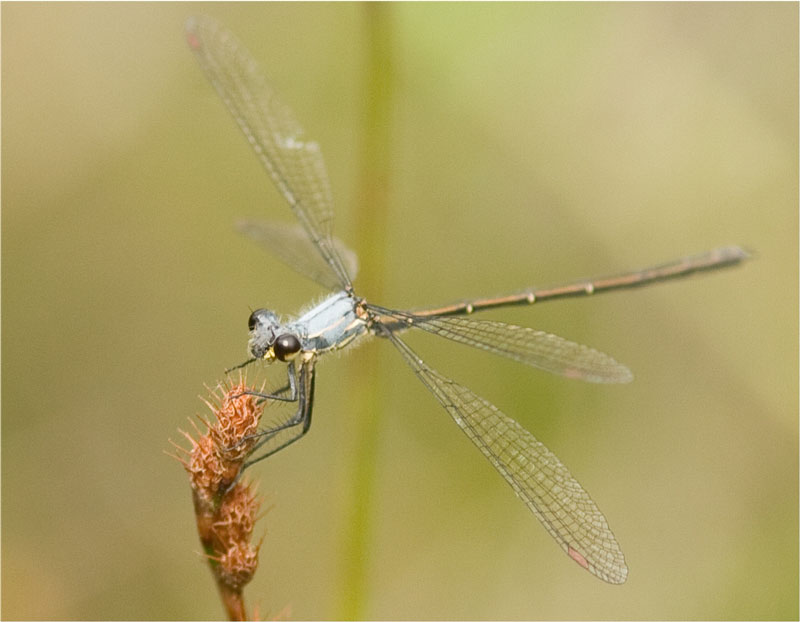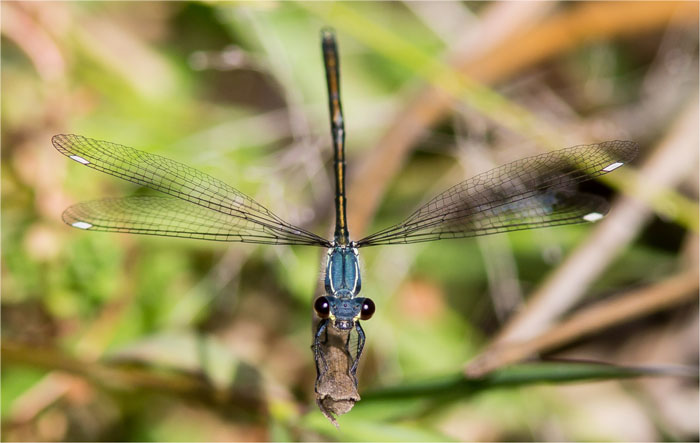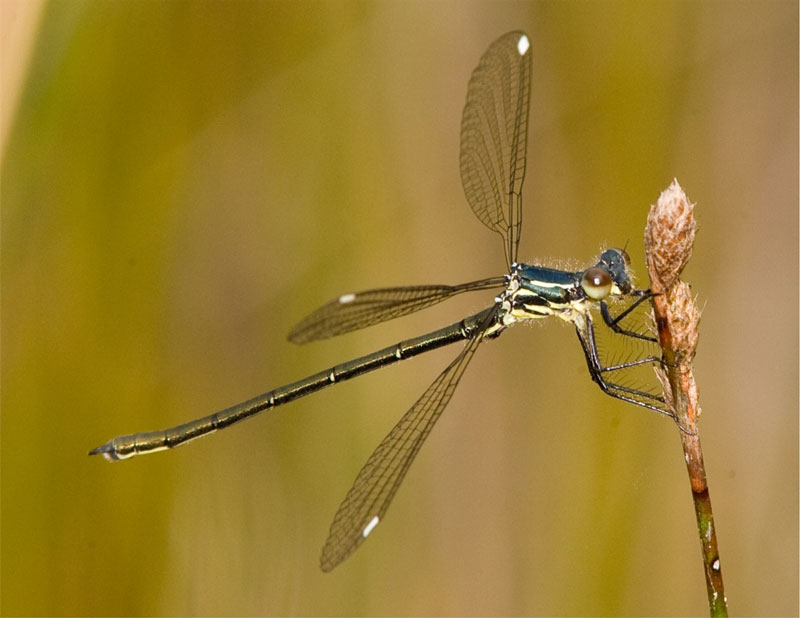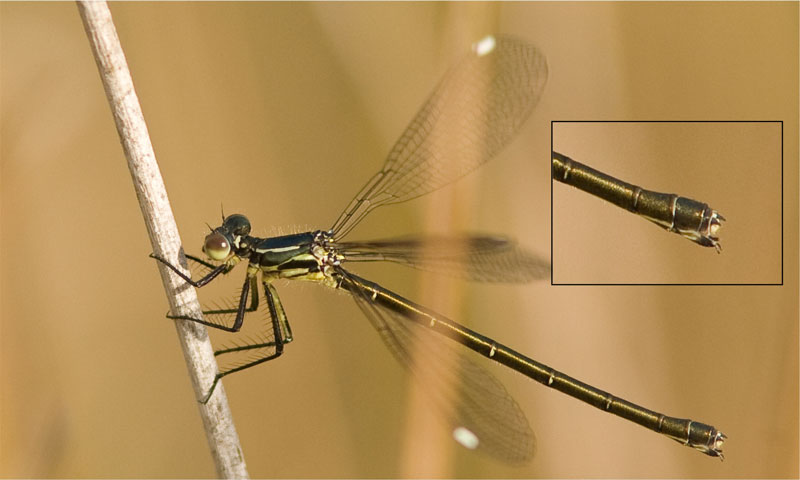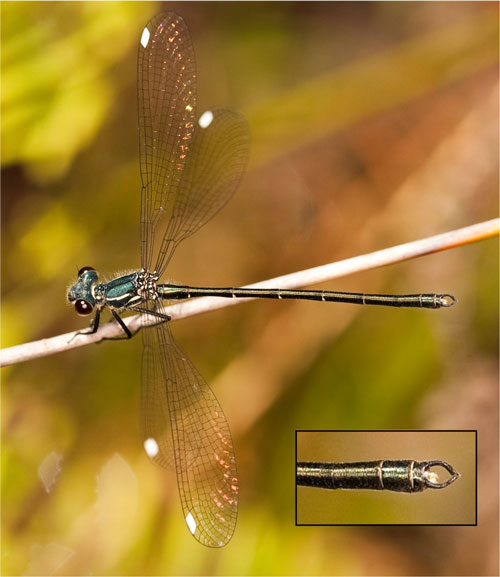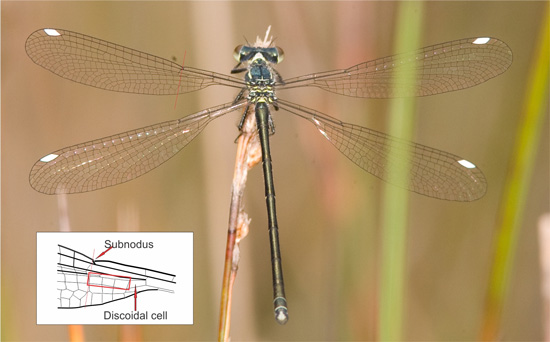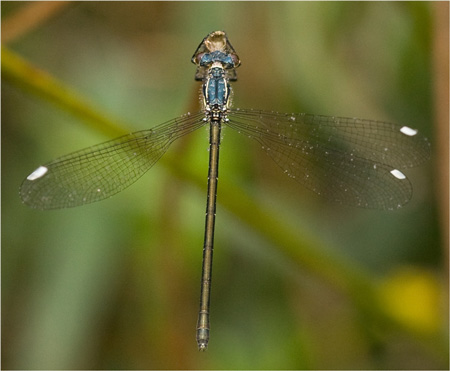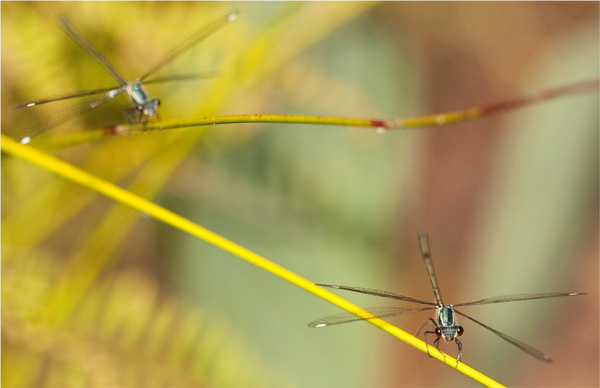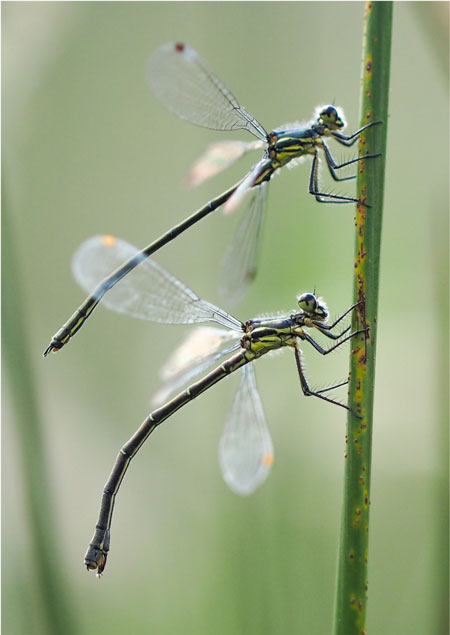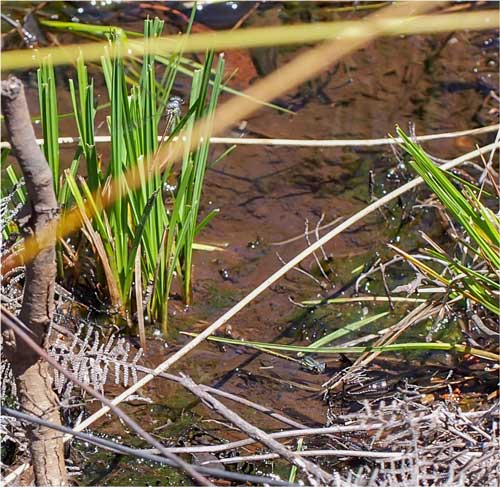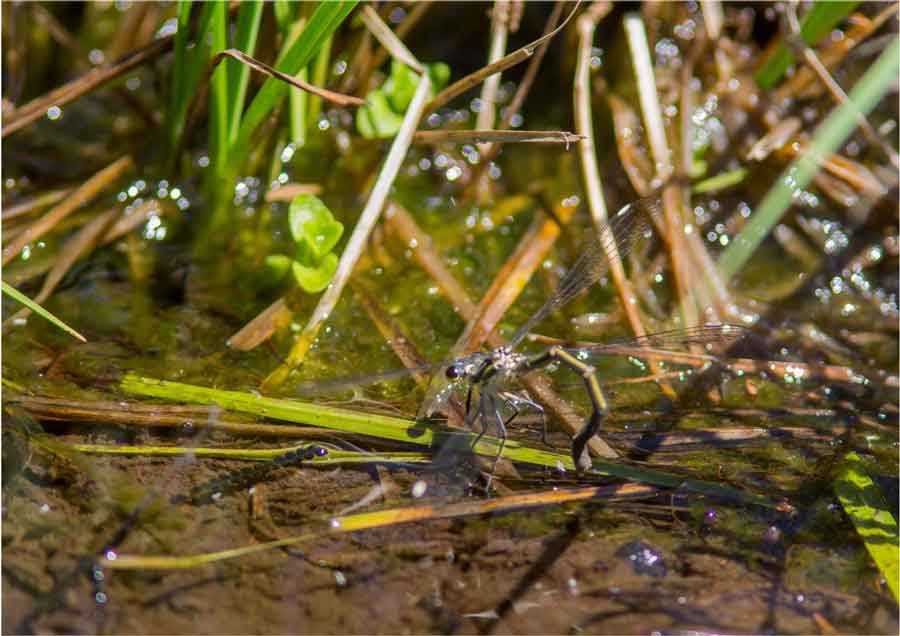Griseargiolestes eboracus (Tillyard, 1913)
GREY-CHESTED FLATWING
Family Megapodagrionidae
This is a small damselfly which when young is a beautiful metallic green with cream to yellow markings and white pterostigmas. As they age their markings become partly obscured by a pale pruinescence on the synthorax. Pterostigmas darken in older males to a pinkish colour.
Generally Grey-chested Flatwings are found in vegetation at boggy seepages and sphagnum bogs. These damselflies can be seen as adults from October to March in northeastern NSW. They are abundant in Deer Vale NSW.
Male inferior appendages are yellowish, as is the base of the female valves adjacent to segment 9. The superior anal appendages of the male do not have a ventral spur as found in species of the genus Austroargiolestes.
The genus Griseoargiolestes usually has 2 but sometimes 3 cells in the discoidal fieldof the wings between the discoidal cell and the level of the subnodus. See inset in the accompanying photo. G eboracus seems to have mostly 3 cells in this position.
Grey-chested Flatwings are often seen in loose groups on suitable low vegetation. It is relatively easy to photograph them as they don't usually fly very far.
A short while after mating the female Grey-chested Flatwing started laying eggs.The male kept watch close by. I have only seen this behaviour once, so am not sure if it is common for the male to do non-contact guarding.
